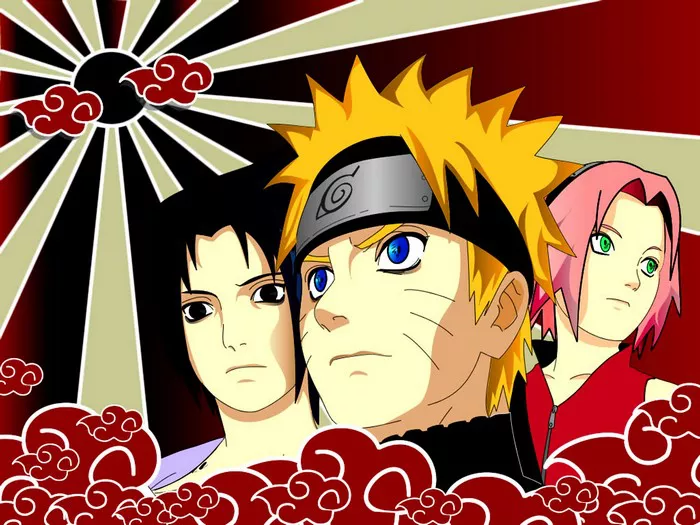In the vast and intricate tapestry of Naruto’s narrative, few events evoke as much sorrow and speculation as the tragic demise of Rin Nohara. A beloved character whose untimely death reverberates throughout the series, Rin’s suicide remains a poignant and haunting mystery for fans and scholars alike. As we delve into the depths of her character and the circumstances surrounding her death, we embark on a journey to unravel the complex motivations and underlying factors that drove Rin to take her own life.
The Character of Rin Nohara: A Brief Overview
Rin Nohara, a kunoichi from the Hidden Leaf Village, was introduced to viewers and readers as a member of Team Minato, alongside Kakashi Hatake and Obito Uchiha. Known for her kindness, intelligence, and unwavering loyalty, Rin quickly endeared herself to fans as a compassionate and resilient character amidst the trials and tribulations of the shinobi world.
Despite her limited screen time and character development compared to other main characters in the series, Rin’s presence left an indelible mark on the hearts of viewers and readers alike. Her interactions with Kakashi and Obito, as well as her role in pivotal moments of the series, showcased her depth and complexity as a character, setting the stage for the tragedy that would ultimately befall her.
The Tragic Incident: Rin’s Death
Rin’s death occurs during a critical juncture in the Naruto narrative, serving as a catalyst for the transformation of several key characters and the escalation of conflict between the Hidden Leaf Village and the mysterious organization known as the Akatsuki. The circumstances surrounding Rin’s death, initially shrouded in mystery, gradually come to light as the series unfolds.
In the canonical storyline, Rin is revealed to be a target of the Hidden Mist Village due to her possession of the Three-Tails, a powerful tailed beast sealed within her body. Sensing the imminent danger posed by her capture, Rin makes the devastating decision to take her own life, seemingly betraying her comrades and leaving behind a legacy of sorrow and regret.
Theories and Speculations: Unraveling the Motivations Behind Rin’s Suicide
The question of why Rin chose to end her own life remains a subject of intense speculation and debate among fans of the Naruto series. While the canonical storyline provides some insight into the circumstances surrounding her death, the underlying motivations and emotional turmoil driving Rin’s decision remain open to interpretation. Several theories and hypotheses have emerged in attempts to shed light on this tragic event.
1. Protection and Sacrifice
One prevalent theory posits that Rin’s decision to commit suicide was driven by a desire to protect her comrades and the village she held dear. As a shinobi tasked with safeguarding the Hidden Leaf Village, Rin likely understood the grave threat posed by her capture at the hands of enemy forces. Rather than risk falling into enemy hands and potentially endangering the village, Rin may have chosen to sacrifice herself in a final act of selflessness and bravery.
This theory aligns with Rin’s established character traits, including her unwavering dedication to her comrades and her willingness to make difficult decisions for the greater good. By choosing to end her own life, Rin may have believed that she was sparing her friends from the burden of having to rescue her or confront the consequences of her capture.
2. Psychological Trauma and Despair
Another interpretation suggests that Rin’s suicide was motivated by profound psychological trauma and despair stemming from her traumatic experiences as a shinobi. Throughout the series, Rin is depicted as a character burdened by the weight of her responsibilities and the harsh realities of the shinobi world. The constant threat of violence, betrayal, and loss may have taken a toll on Rin’s mental and emotional well-being, leading her to a state of despair from which suicide appeared as the only escape.
This theory highlights the pervasive themes of trauma and mental health in the Naruto series, exploring the psychological toll of war and conflict on its characters. Rin’s suicide may be viewed as a tragic consequence of the pervasive cycle of violence and suffering that plagues the shinobi world, underscoring the human cost of warfare and the importance of addressing mental health issues within the context of the narrative.
3. Manipulation and Coercion
A more sinister interpretation posits that Rin’s suicide was the result of manipulation and coercion by external forces seeking to exploit her vulnerability for their own ends. In the world of Naruto, characters are frequently manipulated and deceived by individuals and organizations with ulterior motives, leading to tragic consequences for themselves and those around them.
It is conceivable that Rin may have been targeted by enemy agents or factions seeking to destabilize the Hidden Leaf Village or gain control of the Three-Tails sealed within her body. Through a combination of psychological manipulation, threats, or promises of false salvation, Rin may have been driven to take her own life as a means of thwarting her captors’ plans or preserving a greater secret.
Conclusion: The Legacy of Rin Nohara
In the wake of Rin’s tragic death, the legacy of her character endures as a poignant reminder of the human cost of war and conflict in the Naruto universe. Whether driven by selflessness, despair, or manipulation, Rin’s decision to take her own life resonates as a profound and heartbreaking moment in the series, shaping the destinies of those left behind and leaving a lasting impact on the narrative as a whole.
As fans continue to reflect on the tragic circumstances surrounding Rin’s death, one thing remains clear: her memory lives on as a testament to the resilience, courage, and sacrifice of the shinobi who navigate the treacherous paths of the Naruto universe. In death, Rin Nohara becomes more than a character in a story; she becomes a symbol of the enduring human spirit and the capacity for hope and redemption in the face of adversity.


